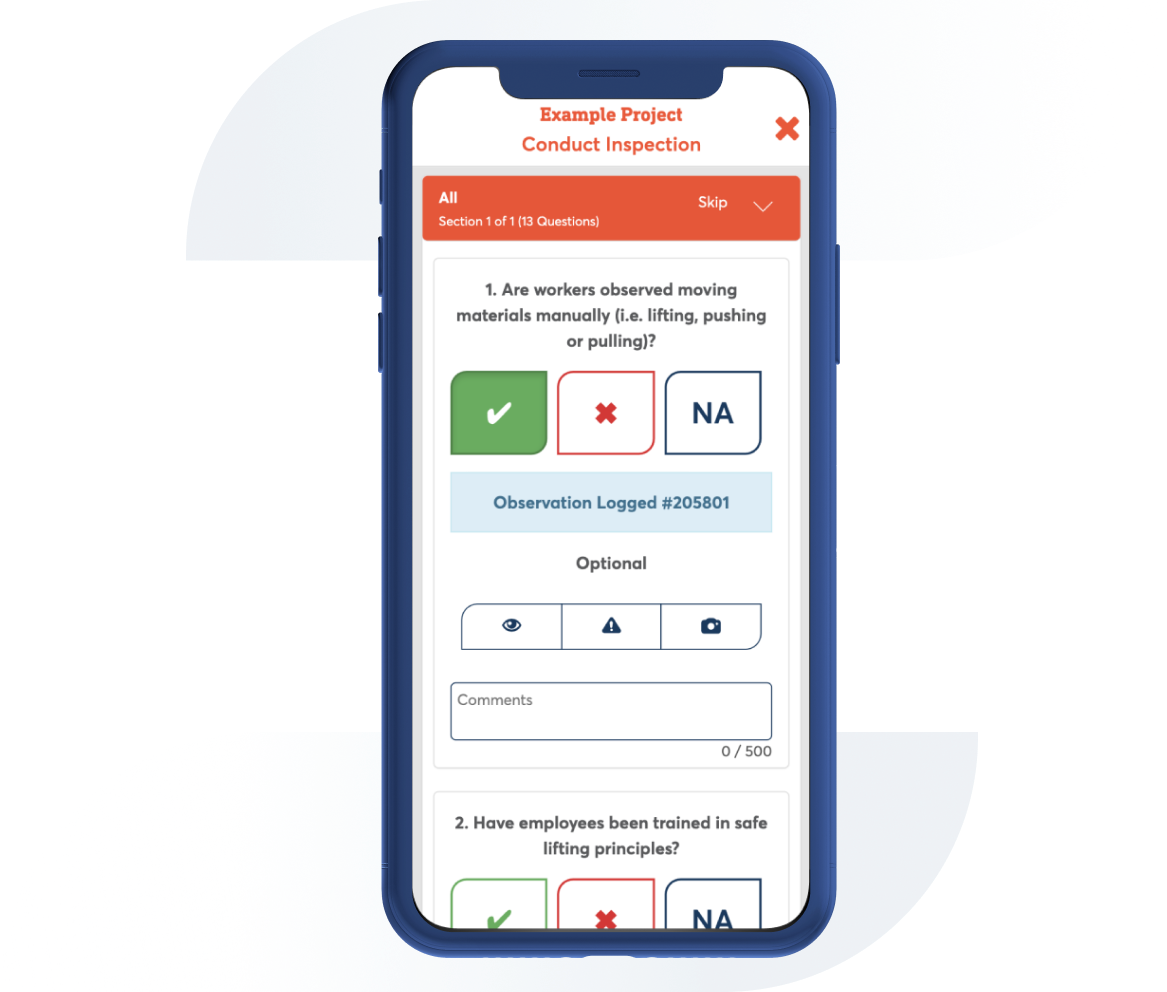Effective Tailboards Inspection
Contributor: Safesite Jurisdiction: OSHA
Tailboards can help prepare and plan ways that employees and visitors can stay safe onsite. An effective tailboard will provide information on local government as well as planned procedures for on-the-job safety.

Template Preview
1. Are tailboards conducted before work is started, whenever a worker or visitor arrives at the job site, whenever conditions or hazards change, whenever scope of work changes?
Actions
2. Are tailboards conducted in accordance with local government and company requirements? (I.e. documented, IAW WAC 296-45, 29CFR1910.269, etc.)
Actions
3. Does the tailboard content include: Hazards associated with the planned scope of work?
Actions
4. Does the tailboard content include: Planned work procedures, including tooling and employee qualifications?
Actions
5. Does the tailboard content include a discussion of required PPE, including arc rated clothing and hot line tools if required?
Actions
6. Does the tailboard content include: Hazardous energy control considerations? (I.e. clearances and outages, etc.)
Actions
7. Is the tailboard discussion tailored to the complexity and risk of the job? (I.e. A brief discussion is satisfactory if the work is routine and a more extensive briefing is required for particularly complicated or hazardous jobs or for less experienced employees.)
Actions
8. Does the tailboard content include how to work safely around mobile equipment like Bucket Tucks, Digger Derricks, Mobile cranes, etc.?
Actions
9. Does the tailboard content include precautions for working in or near a right-of-way, including traffic control measures in place to protect workers during the job?
Actions
10. Are all crew members aware of information such as line voltage, circuit impacted, closest cut-out, and other information required when reporting an injury or emergency?
Actions
11. Are all crew members allowed to participate and ask questions to clarify job steps, potential hazards and safety precautions ?
Actions
12. Write Comments or Remarks Here:

Can't find what you are looking for?
